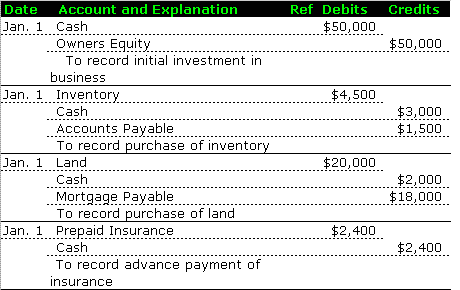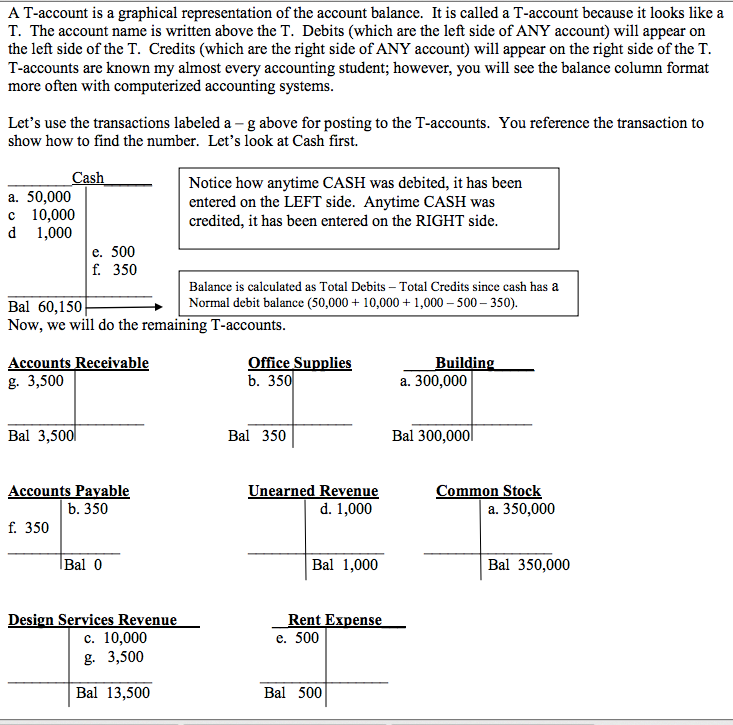Bookkeeping
How To Review Manual Journal Entries
Once you have all of this information, you are ready to prepare the journal entry. One last accounting concept you should understand is the chart of accounts. The chart of accounts is a list of account types that all business transactions fall into. We’ve already discussed assets, liabilities, and equity.

Top 10 Examples Of Journal Entry

Failing to record all financial transactions could affect your ability to get a bank loan or lead to inaccurate tax returns that can result in interest and penalties. In the example above, insurance expense and prepaid insurance are the two accounts in this https://personal-accounting.org/ journal entry. The insurance account is an expense account that will appear on the income statement (P&L) as an increase to total expenses. The prepaid insurance account is an asset and will appear on the balance sheet report as an increase to total assets.
In reviewing manual journal entries, the reviewer makes sure each journal entry’s date is correct based on related business transaction date. Transactions that occur near the beginning or end of an accounting period must be doubled checked to ensure they are recorded in the correct period. A journal entry often makes direct reference to the accounts in the general ledger to identify the posting ledger account for each entry account.
Such journal entries are calledcompound journal entries. When you make a financial transaction, you make a journal entry in your accounting journal https://personal-accounting.org/examples-of-key-journal-entries-accountingtools/ to record that transaction. The transaction is recorded in the general journal or one of the special journals for the most active accounts.
These entries are typically made to record accrued income, accrued expenses, unearned revenue and prepaid expenses. The purpose of an accounting journal is record business transactions and keep a record of all the company’s financial events that take place during the year. Examples of key journal entries An accounting ledger, on the other hand, is a listing of all accounts in the accounting system along with their balances. Adjusting entries ensure that expenses and revenue for each accounting period match up—so you get an accurate balance sheet and income statement.
The entries are made in accordance with the matching principle to match expenses to the related revenue in the same accounting period. The adjustments made in journal entries are carried over to the general ledger which flows through to the financial statements. A journal entry is a record of a business’ financial transactions and has a direct impact on income statements and balance sheets. Journal entries must always balance, meaning every debit needs a corresponding credit. Before we learn how to prepare journal entries, you should understand the basic accounting equation and what debits and credits are.
Even with computerized accounting systems some general journal entries are necessary. Common general journal entries are the adjusting Examples of key journal entries entries. For example, prior to issuing the company’s financial statements there will be an adjusting entry to record depreciation.
How To Approach Journal Entries
An adjusting accounting journal entry is typically recorded when closing the books. Journal entries are a key component as well as the first step in the accounting cycle.
If you are recording journal entries only once a year, then your journal entry date will most likely be December 31 of the year you are recording the journal Examples of key journal entries entry for. Check the posting date, accounting period and account reference. Journal entries are arranged in the order of business transaction dates.
Understanding The Income Statement
This journal entry will debit Depreciation Expense and will credit Accumulated Depreciation. A journal is a record of transactions listed as they occur that shows the specific accounts affected by the transaction. Used in a double-entry accounting system, journal entries require both a debit and a credit to complete each entry. So, when you buy goods, it increases both the inventory as well as the accounts payable accounts.

- All journal entries are maintained within the company’s journal.
- After the financial effects are analyzed, the impact of each transaction is recorded within a company’s accounting system through a journal entry.
- The purchase of inventory, payment of a salary, and borrowing of money are all typical transactions that are recorded by means of debits and credits.
Example Of A Journal Entry
Every transaction that gets entered into your general ledger starts with a journal entry that includes the date of the transaction, amount, affected accounts, and description. The journal entry may also include a reference number, such as a check number. The purpose of adjusting entries is to convert cash transactions into the accrual accounting method.
In summary, adjusting journal entries are most commonly accruals, deferrals, and estimates. Accruals are revenues and expenses that have not been received or paid, respectively, and have not yet been recorded through a standard accounting transaction. Deferrals refer to revenues and expenses that have been received or paid in advance, respectively, and have been recorded, but have not yet been earned or used. Estimates are adjusting entries that record non-cash items, such as depreciation expense, allowance for doubtful accounts, or the inventory obsolescence reserve. The reason why we do journal entries is to ensure all of a business’ transactions that occur during the accounting period are accurately reflected in the financial statements.
Manage Your Transactions To Streamline Your Business
At the end of an accounting period, all journal entries are summarized and transferred to the general ledger accounts. Here is an example of the journal entry you would make at the start of a new business. If an owner invested $20,000 in a new business, this would be the format of the journal entry. There would be an increase in assets and a decrease in equity.
Businesses later post journal entries to their general ledger, but they must first review them to ensure data accuracy. Rather than dealing with debits and credits, some businesses just record one side of the transaction, hence the term single-entry accounting system. In the above example, you would simply record the revenue amount of $1,500 in your sales journal.
A journal entry is a record of a financial event that has occurred in your business. By recording journal entries, you ensure that your financial statements are accurate and complete. We cover basic accounting, two types of journal entries, and three simple steps Examples of key journal entries to prepare journal entries manually or using an accounting software. A business may have system-generated and manually entered journal entries for accounting. Other entries may be event-specific and difficult to computerize, requiring manual recording.
Each of the accounts that we record in a journal entry impact one or more financial statement. All the accounts you are going to include in your journal entries fall into one of the five account categories noted in the debit and credit section . Total the debit and credit and verify these against source documents.
Specifically, the cash account would record a debit of $20,000, and the owners’ equity account would be a credited $20,0000. In other words, the owners’ equity account lost $20,000 and the cash account gained $20,000. The journal entry date should reflect the accounting period you would like the transaction to show up on financial statements.
As an example, assume a construction company begins construction in one period but does not invoice the customer until the work is complete in six months. In the example above, depreciation expense and accumulated depreciation are the two accounts in this journal entry.
Check out our article on adjusting journal entries to learn how to do it yourself. Adjusting journal entries are recorded in a company’s general ledger at the end of an accounting period to abide by the matching and revenue recognition principles.
